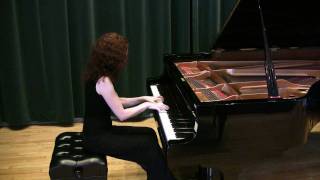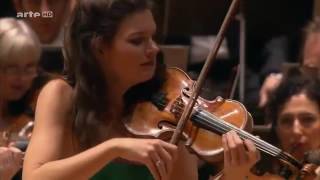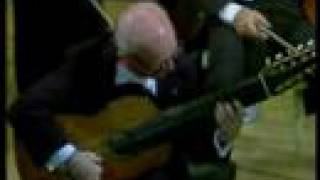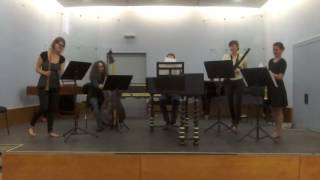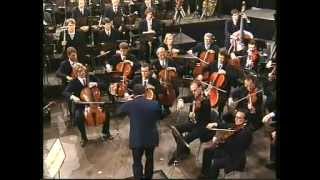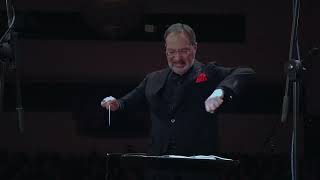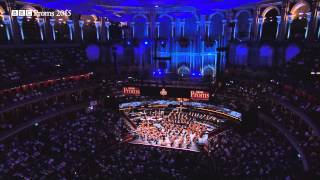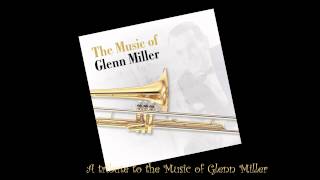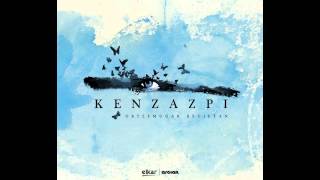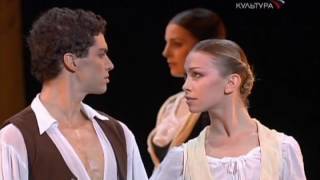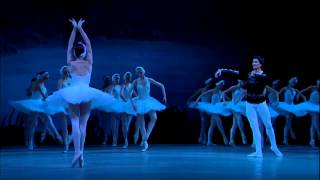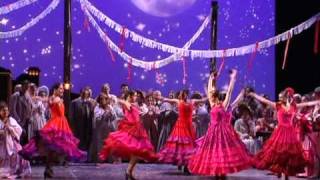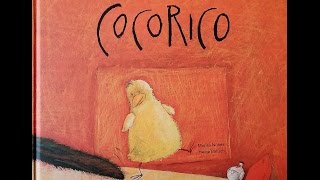Recommended music videos for initiation to classical music
Ludwig van Beethoven (1770-1827) together with Bach and Mozart is part of the trio of giants of Western music. Born in Bonn , his father, of Flemish origin, tried to make a second Mozart of him, though it was a notable failure. Despite this, from the age of nine, the organist Christian Gottlob Neefe captivated him with the study of Bach , whom he would always keep in mind. In 1787 he moved to Vienna with the intention of receiving Mozart classes, but the death of his mother brought him back to Bonn after a few days. And so after five years, he returned to Vienna where he made contact with Haydn and Salieri , making himself known as a composer and pianist with well-known public recognition. However, his profession as a pianist could not be carried out due to the deafness that attacked him the following year until he was totally disabled from said faculty.
The Bagatelles, Op. 33 , (“classical musical composition of a light character and short duration”) for piano was composed by Ludwig van Beethoven in 1801-02 and published in 1803, through the Viennese publisher Bureau des arts et d'industrie . The seven trifles are very typical of Beethoven 's early style, retaining many compositional features of the classical period . The second trifle , which is the one we are presenting today, written in A–B–A form, is perhaps the second most difficult in the series. contains scales in thirds, arpeggios, and a continuous scale in the left hand.
Today it is offered to us by the pianist of Ukrainian origin Oksana Zotova
Jules Massenet (1842 - 1912) was a French Romantic composer best known for his operas, which were very popular during the late 19th and early 20th centuries. Born in Montaud , when he was eleven years old his family moved to Paris so that he could study at the Conservatoire where he would be a student of Ambroise Thomas . He obtained a first prize for piano in 1859 and in 1863 he won the Grand Prix of Rome thanks to his cantata David Rizzio ; in 1878 he was appointed professor of composition at the Paris Conservatoire . Massenet has left an essentially lyrical work (twenty-five operas); but he also composed ballets, oratorios and cantatas, orchestral works and some two hundred songs, as well as some piano works.
Méditation is a symphonic intermezzo to Massenet 's opera Thaïs . The opera premiered at the Opéra Garnier in Paris on March 16, 1894, and the Intermission is scored for solo violin and orchestra, as an instrumental intermission between Act II scenes. In the first scene of Act II, Athanaël , a cenobite monk, confronts Thaïs , a beautiful and hedonistic courtesan and devotee of Venus , and tries to persuade her to leave her life of luxury and pleasure and find salvation through God . It is during a time of reflection after the meeting that the Orchestra plays the Meditation . In the second scene of Act II , after the Meditation , Thaïs tells Athanaël that she will follow him into the desert.
Janine Jansen (1978) is a Dutch violinist. He began studying violin at the age of six; he studied under Coosje Wijzenbeek, Philipp Hirshhorn , and Boris Belkin . His father and brother are also musicians. Jansen emerged, in 2001, as a soloist with the National Youth Orchestra of Scotland , where he gave the Brahms Violin Concerto . She opened the BBC Proms in 2005. She is very adventurous in her playing, with an emphasis on communication, rather than precision or adherence to the status quo , and regularly works with the most outstanding orchestras and conductors in the world. world.
Joaquín Rodrigo (1901-1999) was a Spanish composer born in Sagunto (Valencia). At the age of seven he was blind; at nine, he began his studies in music theory, violin and piano; at 16, harmony and composition and at 22, he began to compose his first works. At the age of 26, he moved to Paris , where he studied with Paul Dukas for five years. In 1940 he premiered the Concierto de Aranjuez in Barcelona , which from then on would be known worldwide. He was a prolific composer who wrote works for solo instruments, for piano with another instrument, for string orchestra, wind orchestra, and symphony orchestra, concertos for different instruments, songs, symphonic-choral works, and stage music, keeping clarity at all times. , delicacy and distinction of his music.
Fantasy for a gentleman is a concerto for guitar and orchestra by Joaquín Rodrigo . It is his most popular concert, after the Concierto de Aranjuez . Its four movements are based on six short dances for solo guitar by the 17th-century Spanish composer Gaspar Sanz , taken from the work commonly known as Instrucción de música sobre la guitarra española . Most of the movements retain the original names. Rodrigo expanded Sanz 's themes to produce a more impressive work, although he was always clear about how much to contribute with his work to keep Sanz 's ideas and the essence of these dances clear "A whole past of dances, in which old times and again they end up connecting, revives in these titles. I decided that the harmonic language and the sound climate would not hinder the spirit of those titles".
Today we offer the second movement of this concert with Narciso Yepes (1927-1997) as soloist: a musician born in Lorca , Murcia, and known worldwide for his work as a Spanish classical guitarist.
The Gospel originates in the southern regions of the USA in the Afro-American Protestant Churches of the 18th century ; born from the black spirituals , songs inspired by the prayers of the Christian black slaves, which were based on African music. The lead singer establishes a dialogue with the choir based on calls and responses with clapping and participatory dances. The spirituals evolve into gospel with the incorporation of musical instruments and a more complex harmony.
Oh Happy Day is a 1755 gospel music hymn by clergyman Philip Doddridge and arranged by Edwin Hawkins (1943-2018), who was an American pianist and composer regarded as one of the pioneers who evolved modern urban gospel. He with his choir Edwin Hawkins Singers was the one who arranged and popularized the Oh Happy Day song, until making it popular worldwide in 1969, reaching No. 4 on the US singles chart, No. 1 in France , Germany and the Netherlands and No. 2 on the Canadian Singles Chart, UK Singles Chart , and Irish Singles Chart. Since then it has become a standard of gospel music.
Recommended classical music videos
Johann Friedrich Fasch (1688 -1758). was a German composer born in the village of Buttelstädt , 11 km north of Weimar . After his father's death in 1700, Fasch lived with his maternal uncle, the clergyman Gottfried Wegering of Göthewitz . It is presumed that he was the one who put him in contact with the opera composer Reinhard Keizer . He belonged to the Weissenfels children's choir and had music teacher Johann Kuhnau at the Thomasschule in Leipzig . He toured Germany , obtaining the position of violinist in the Bayreuth orchestra in 1714. In 1722 he was appointed Kapellmeister at Zerbst , a position in which he remained until his death. His major works include cantatas, concertos for different instruments, symphonies, and chamber music.
At first , the Sonata was a composition written to be played or "sounded" by one or more musical instruments (as the cantata was to be sung by one or several voices). Beginning with classicism (1750-1810) its definition stabilizes, applying to a composition for one or two instruments and generally consisting of three movements (fast-slow-fast) sometimes with a short introduction. Not to be confused with sonata form , which is a compositional model consisting of three sections without interruption: a) an exposition of the two main themes (usually two contrasting themes) b) development of the presented themes and c) restatement of the main topics. The sonata form is normally applied to the first movements of sonatas, quartets, symphonies, and concertos .
Today, in a performance by the Almira Ensemble , we can enjoy the Sonata for two oboes, bassoon and continuo FaWV N:d2 .
Nicolai Rimsky-Korsakov (1844-1908) was a Russian composer belonging to the group of The Five (Group made up of Balakirev, Borodin, Cui, Musorgsky and Rimsky-Korsakov himself) who set themselves the common goal of promoting peculiar Russian music, moving away from of European musical dependency and favoring musical nationalism. Rimsky 's works are considered as benchmarks for a varied, colorful and balanced orchestration and considered among the most representative of the orchestral repertoire; all this within his nationalist creed that promoted the incorporation of motifs, rhythms and songs from Russian folklore to his creations.
Capricho español , Op. 34, is an orchestral work composed in 1887 by Nikolai Rimski-Kórsakov , based on Spanish melodies. The original Russian title is Каприччио на испанские темы (Kaprichchio na ispánskiye temy, literally Capricho on Spanish Themes ). The inspiration for the work lay in the music that he discovered, in part, on his travels. Between 1862 and 1865 the composer had traveled extensively around the world due to his position as an officer in the Russian navy; in Spain he spent several days in Cádiz . The work consists of a very prominent part by a solo violin, to the point that it was originally conceived as a fantasy for violin and orchestra. Later, the composer incorporated other solo instruments.
Structure. It consists of five movements: I (0´16´´) ALBORADA. It is a festive dance from the northwest of the peninsula (Asturian, in this case) that celebrates the sunrise .-. II (1´26´´) VARIAZIONI (Variations). It begins with a horn melody and later develops various variations on the theme, with different instruments and sections of the orchestra taking center stage.-. III (6´44´´) DAWN. It presents the same theme of the first movement in almost identical fashion, except for changes in instrumentation and in tonality .-. IV (7´53´´) SCENE AND GYPSY SONG. It comprises five sections, each with a different solo instrument: horns and trumpets, violin, flute, clarinet and harp. These parts for soloists interpret the melody on a rhythmic background by various percussion instruments.-. V (10´11´) ASTURIAN FANDANGO. It is a live dance from Asturias . The piece ends with a reappearance (14'47''), more energetic than before, of the theme of the Alborada .
Today it is offered to us by the Berlin Philharmonic conducted by the great Indian maestro Zubin Mehta (1969)
Antonín Dvořák (1841-1904), born in Nelahozeves (then Bohemia and now the Czech Republic ), is considered one of the great masters of the second half of the 19th century and the main representative of Czech nationalism. In 1847 he entered the primary school of his town, where he received his first musical lessons. During the 1860s he played viola in the Orchestra of the Bohemian Provisional Theater , conducted from 1866 by Bedřich Smetana . In 1873 he was exalted with all kinds of important international awards for his collection of Slavonic Dances . Throughout his life he wrote abundant vocal, chamber, symphonic and operatic music. His New World Symphony is a well-known work and its themes have been widely used in popular music.
The Sprite of the Waters (Czech: Vodník) is a symphonic poem, Op. 107 (B. 195), composed by Antonín Dvořák in 1896. The source of inspiration was a poem found in a collection published by Karel Jaromír Erben under the title Kytice . Four of the six symphonic poems that Dvořák composed were inspired by works of poetry found in that collection. Vodník tells a story of a mischievous water sprite who catches drowning souls in overturned teacups. Dvořák's symphonic piece, composed in the form of a rondo , closely follows Erben 's written verses; in many places the music literally fits the text. This may well be due to the fact that Dvořák derived his themes from setting Erben 's words to music.
The interpretation is given by the RTVE Symphony under the baton of the German maestro Jun Märkl .
Gustav Holst (1874-1934) was a British trombonist, arranger, composer, and teacher. He is primarily known for his orchestral suite The Planets , for although he composed many other works in a variety of genres, none achieved comparable success. His distinctive compositional style was the product of many influences, with Richard Wagner and Richard Strauss being the most crucial early in his development. The subsequent revival of English folk song in the early 20th century and the example of emerging modern composers such as Maurice Ravel led Holst to develop and refine his personal style. His compositions had a marked influence on a number of younger English composers, such as Edmund Rubbra, Michael Tippett , and Benjamin Britten .
The planets is his best-known work and it is a suite consisting of seven movements personified on seven planets; it is exposed in the manner of a symphonic poem with meanings frequent to those of astrology and those of Greco-Roman mythology.
Mars is the first movement of the suite and the movement we will focus our attention on today. Mars is the god of war, the “Bearer of War” as Holst subtitles it, embodied in an intense, disturbing and threatening march. Today it is offered to us by the BBC Symphony Orchestra under the baton of the Finnish maestro Susanna Mälkki .
Recommended music videos for all tastes
Alton Glenn Miller (1904-1944) was an American big band trombonist, composer, and conductor. At the age of 33, he founded the Glenn Miller Orchestra with which he performed, recorded and sold his creations that obtained resounding successes; between 1939 and 1942 alone he had 16 number one albums in the USA . In 1942, in the midst of World War II, he enlisted in the army with the mission of acting before companies of American soldiers; on one of these trips, while crossing the English Channel , his plane disappeared, never to be heard from again. The current Glenn Miller Orchestra was founded in 1956 with the same ideas and objectives that it had in its beginnings.
Christina Perri (1986) is an American singer, who rose to fame at the age of 24 when the Fox network used her single Jar of Hearts in 2010 on the So You Think You Can Dance program, and Rolling Stone magazine recognized her as "Band of the Week" . Christina , of Italian descent, was raised in Bensalem , a small suburb of Philadelphia . She moved to Los Angeles when she turned 21, got married, and began producing music videos. After 18 months, they divorced and returned to Philadelphia in late 2009. Perri 's song "Jar of Hearts " sold 48,000 digital copies, debuting on the Billboard Hot 100 at number 17 and peaking at number 28 on Hot Digital Songs . within a month it had sold about 100,000 copies.
Ken Zazpi is a Basque group of pop-rock music created in 1996 in Gernika (Bizkaia). In 1996 they released the song Bi eta bat and in 2000 they began to dedicate themselves to music professionally. That year, they recorded a demo in Muxika (Bizkaia) with the help of guitarist José Alberto Bátiz (then in Fito & Fitipaldis ). Their acoustic album, Gelditu denbora ("Stop time") took them on a concert tour through the Basque Autonomous Community, Navarra and Catalonia . Today we propose the album released in 2010 and so far is his last studio album, Ortzemugak begietan ; in the lyrics they had the collaboration of Joseba Sarrionandia, Maialen Lujanbio, Jon Maia, Julen Gabiria and Uxue Alberdi .
Yvonne Catterfeld (1979) is a German singer and actress. At the age of 15 he began to simultaneously study piano, flute, singing and dance; After secondary education, he entered the Leipzig Music Academy to study jazz and pop music for two years. After several failed attempts, his fourth single Für Dich became a #1 hit in Germany, Austria and Switzerland , while his first album went platinum. Currently, she alternates her profession as a singer with that of an actress.
Recommended peculiar videos
Georges Bizet (1838-1875) was a French pianist and composer who did not achieve much success during his lifetime. Bizet won several prizes throughout his brilliant career as a student at the Paris Conservatoire , including the prestigious Prix de Rome in 1857. He was recognized as an exceptional pianist, though he preferred not to take advantage of his ability and rarely played in public. His best-known opera, Carmen , achieved a sensational success at its premiere that he did not enjoy as he died three months after it of a heart attack at the age of 39. The rest of his works were cornered and rescued little by little in the 20th century. Despite this, he is currently considered a reference to the 19th century and a brilliant and imaginative composer.
L'Arlesienne (The Girl from Arles ) It is a work of incidental music composed by Georges Bizet for voice, choir and chamber orchestra, made up of 27 numbers of different lengths, of which today we will attend five numbers choreographed by Roland Petit and performed by Jérémie Bélingard and Eleonora Abbagnato and the National Ballet of the Paris Opera
Piotr Tchaikovsky (1840-1893) was a Russian composer who graduated from the Saint Petersburg Conservatory and wrote works of different genres, although he achieved his greatest success with his ballets. In 1859 he obtained a position as a civil servant in the Ministry of Justice , which he would abandon at the age of three to be able to dedicate himself solely to music. His personal life was plagued by continuous crises since the death of his mother and his repressed homosexuality, which forced him into a marriage that only lasted a few months. He wrote more than 150 compositions, including piano works, quartets, suites, symphonies, concertos, chorales, cantatas, operas, and ballets. He died at the age of 53 and is considered one of the greatest composers in history.
Swan Lake , Tchaikovsky 's first ballet, is a ballet-fairy tale structured in four acts; it was commissioned by the Bolshoi Theater for the first time in 1877. The work, initially choreographed by Julius Reisinger , was not well received by either the public or critics; which forced Tchaikovsky to a new approach and a new choreography, this time by Marius Petipa and Lev Ivanov ; its revival at the Mariinsky Theater in St. Petersburg achieved its first great success, which has continued to the present day in which it has become one of the most renowned titles in world ballet. The argument deals with a love story between Prince Siegfried and Princess Odette against whom the evil magician Rothbart will use his perfidious tricks that will have to be saved by the Prince .
Today we offer the Love Duet of the second act performed by Ulyana Lopatkina and Danila Korsuntsev accompanied by the Ballet Corps and the Mariinsky Theater Orchestra under the baton of the eminent maestro Valery Gergiev
Amadeo Vives (1871-1932), a composer born in Barcelona , is the author of numerous songs and more than a hundred stage works, including Bohemios, Maruxa and, above all, Doña Francisquita , considered among the masterpieces of the gender. Amadeo began receiving music lessons from his brother at the age of five; later with José Ribera he would study piano, harmony and composition; he collaborated with Lluis Millet in the founding of the Orfeó Catalá , which would begin its journey with Catalan songs harmonized by Amadeo Vives . At the age of fourteen he had composed several sonatas and at the age of 24 he premiered his first opera in Barcelona . Later he moved to Madrid where his stage premieres received successful responses and recognized prestige.
The Fandango is a dance with lively movement and ternary rhythm that derives in multiple forms; localized dance both in the Spanish state and in the Latin American community; while Doña Francisquita is a zarzuela in three acts based on La discreta enamorada by Lope de Vega . So, today we attend the fandango of Dª Francisquita thanks to the Eurolírica Ballet
The snare drum or snare drum is a percussion instrument with an indeterminate sound. According to the Hornbostel-Sachs classification, it belongs to the family of membranophones . It is a drum, usually low in height, with strands called strings arranged diametrically on the lower membrane, which give it its characteristic more strident and metallic timbre than that of the common drum. The musician who plays the caja is called, by association, a caja , and is trained as a percussionist. This instrument is used in orchestras, in music bands and is a fundamental part of the battery.
Recommended music videos for children
Various Wikipedia articles have been used to write these texts.
The texts of Videomusicalis are written in Basque, Spanish and English.





